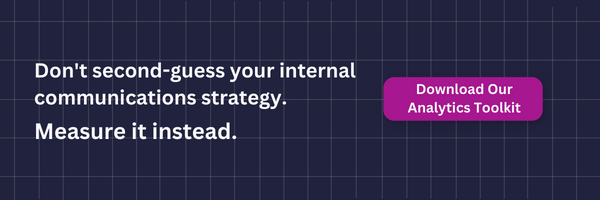
What’s Your Employee Retention Strategy? 7 Tips to Build Staff Loyalty
Attracting and retaining deskless employees has been a major challenge in 2021 but the organizations that unlock new channels to develop commitment and engagement among employees are the ones positioned to win.
Employee retention strategies should focus on centering the employee experience to build trust with the business. Consider the following tips to build employee loyalty for better staff retention.1. Onboard employees for success.
Set new hires up for success with comprehensive onboarding and training from the start. Your business sets the tone with the right onboarding and ensures employees have the tools they need to be productive team members. When done well, onboarding builds trust between employees and employers, which improves productivity and reduces turnover over time.
2. Ensure salary and benefits are competitive.It’s essential to keep employee salaries competitive in the market to attract and retain talent. Review compensation averages in your area by industry and size to ensure your business is keeping up with the trends. If you cannot increase salaries, consider alternative benefits that are important to your employees. What is your maternity leave policy? What type of insurance options are you providing? Are there options for bonuses during high-performing months?
3. Develop strong frontline leadership.
Employees often leave because of bad management, so empowering frontline managers with the skills they need to help their teams will likely impact everyone onsite. Offer frontline managers opportunities for ongoing learning and skills building. Not only will they become better performers, but will also impact the employees they manage. With better managers onsite, employees can thrive and build deeper relationships within their teams.
Because frontline managers are so essential to the success of your business, consider what tools you can provide them with. Would a task management tool or communications platform make their lives easier? Consider technology that can help streamline their work so they can spend more time providing quality service to customers.
4. Cultivate an inclusive workplace culture.
Inclusion relates to a sense of belonging and the psychological safety of your employees to bring their whole selves to work. An inclusive workplace recognizes and celebrates differences among employees and cultivates a space with both formal and informal processes, interactions, and resources with equity and diversity in mind.
Building an inclusive workplace culture won’t happen overnight, but start by sharing helpful resources (like these) and requesting feedback from staff on how you’re doing.
Set clear goals around inclusion and diversity and share it out across the business. Be sure to regularly share updates and be prepared to collect feedback on your initiatives. By prioritizing respect and transparency, you can build trust with employees that value integrity in the workplace.
5. Offer ongoing learning opportunities to everyone.
To keep employees engaged, invest in their growth. When staff members have the opportunity to learn and share their knowledge with others, they build stronger bonds with your business and apply new skills to their jobs. Build a centralized knowledge base for resources and offer training days to build skills. Not only will your business be building a stronger workforce, but it is also signaling to employees that they are valued and worth investing in.
6. Tie work back to the larger company purpose.
According to a 2019 Glassdoor survey, 56% of people prioritize workplace culture over salary and 73% would not apply to a company that didn’t share their values. After an unprecedented year of challenges in the hospitality industry, it’s important for organizations to ground their business in a central purpose. This purpose not only drives the business’s vision forward but attracts the type of employees that resonate with the message.
To build relationships with your employees, identify opportunities to share the company purpose and share how those employees impact – both directly and indirectly – its goals. Consider implementing company values that align with your purpose that can be used in recruiting, hiring, and annual reviews. Create philanthropic opportunities that align with your company purpose to help employees feel part of “something greater.”
7. Provide opportunities to give feedback (and listen!).
Create regular opportunities for employees to provide feedback to leadership. By creating a dialogue, leadership learns what’s working and what can be improved upon. Leaders can also identify the most successful, long-standing performers and replicate patterns of success.
Schedule annual in-person check-ins to connect directly with leaders. Offer anonymous surveys as another way for individuals to give feedback without fear of repercussion. By offering multiple avenues to contribute feedback, your organization can build trust with employees and create stronger relationships.
Of course, it’s essential your business shows how they’re using feedback to improve processes and make changes. Communicate overarching trends from surveys and share plans to implement change across the organization. By keeping yourself accountable, employees will feel heard.
Want to learn how Konverse can help improve employee engagement? Talk to an expert.
Employee retention is a challenge for many deskless industries looking to attract and keep the best talent. By prioritizing the employee experience through communication, benefits, ongoing learning opportunities, and feedback loops, your business can build trust with employees. Stronger ties lead to happier employees and better retention rates, lowering talent acquisition costs and improving the bottom line.


